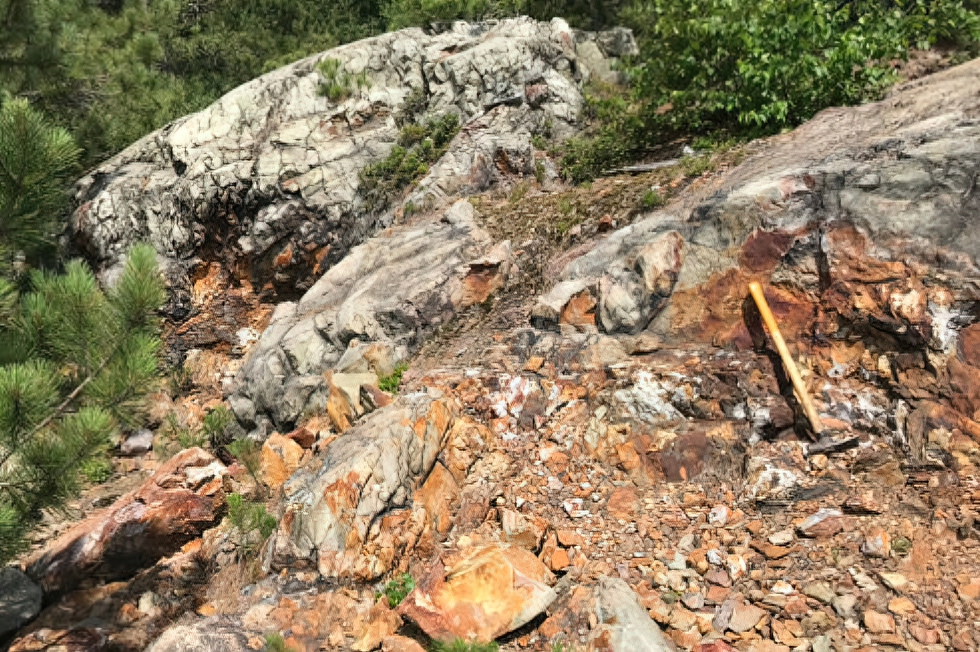Inventus grab samples up to 7.2 g/t palladium at Sudbury 2.0 Project, Ontario

Inventus Mining Corp. [IVS-TSXV; GNGXF-OTC] updated its ongoing exploration programs at its 100%-owned Sudbury 2.0 project near Sudbury, Ontario.
Exploration highlights included Rathbun surface grab samples return up to 7.2 g/t palladium, 1.1 g/t platinum, 0.7 g/t gold, 1.0% copper, and 0.5% nickel. Cobalt Hill 3D IP survey identified a large 600 x 500-metre anomaly with an untested core that may extend to depth below the survey limit.
A highly successful prospecting program at Rathbun, including trenching, mapping, and sampling, has exposed a Sudbury footwall structure extending along a strike length of approximately 1.5 km.
Grab samples of the mineralization along strike returned up to 7.2 g/t palladium, 1.1 g/t platinum, 0.7 g/t gold, 1.0 % copper, 0.5 % nickel. The geological structure has been named the Rathbun Footwall Structure (RFS). It is composed of recrystallized Sudbury breccia, metabreccia and inclusion-bearing quartz diorite, the same geological units that host high-grade Ni-Cu-PGE sulfides in footwall deposits around the Sudbury Basin.
An example of this type of high-grade mineralization analogous to Sudbury footwall deposits occurs within the RFS at the historic shaft and muck pile where sample assays ranged from 6.3 to 74.4 g/t palladium, 1.0 to 18.4 g/t platinum, 0.8 to 22.8% copper, 0.1 to 0.5% nickel, 0.5 to 13.3 g/t gold, and 1.0 to 13.0 g/t silver.
Beginning this fall/winter, geophysics and drilling will be used to identify and test targets along the RFS.
The results of the 3D induced polarization (IP) survey at Cobalt Hill has identified a 600-metre north-south by 500-metre east-west anomaly. The IP anomaly is in the center of the observed alteration and brecciation at Cobalt Hill. It has a strong correlation with Inventus’ surface mapping and drill intersections of the sulfide breccia. 2021 drill hole CH-21-02 intersected the northern edge of the anomaly and returned an intersection of 7 metres of 4.4 g/t gold, 0.09% cobalt and 0.03% nickel within 44 metres of 1.3 g/t gold, 0.04% cobalt and 0.02% nickel. The center of the IP anomaly occurs 200 metres south of drill hole CH-21-02 and begins at approximately 150 metres depth. Inventus is planning a winter drilling program at Cobalt Hill to test the IP anomaly associated with the mineral system at Cobalt Hill.
“The IP results from Cobalt Hill are very encouraging and illustrate a sizeable untested target that extends at depth. The IP anomaly correlates well with the IOCG-type gold, cobalt, nickel and REE mineralization found on the surface and intersected in drilling at the northern edge of the anomaly in early 2021. This is a strong indication that the survey results illustrate increased sulfide concentrations that may extend below the lower limit of the IP survey. I am very excited to get the drill spinning and explore this mineral system below surface,” said Wesley Whymark, VP of Exploration.
The property-wide airborne MT survey was completed in August, and the final 3D inversion product was finished in September. The MT data has provided valuable subsurface information above the Temagami Geophysical Anomaly including an abundance of low resistivity structural targets similar to the one that hosts the Cobalt Hill and Lake Zone mineralization. Inventus is currently evaluating and prioritizing the targets for further exploration.
